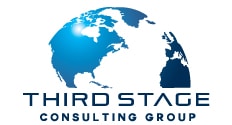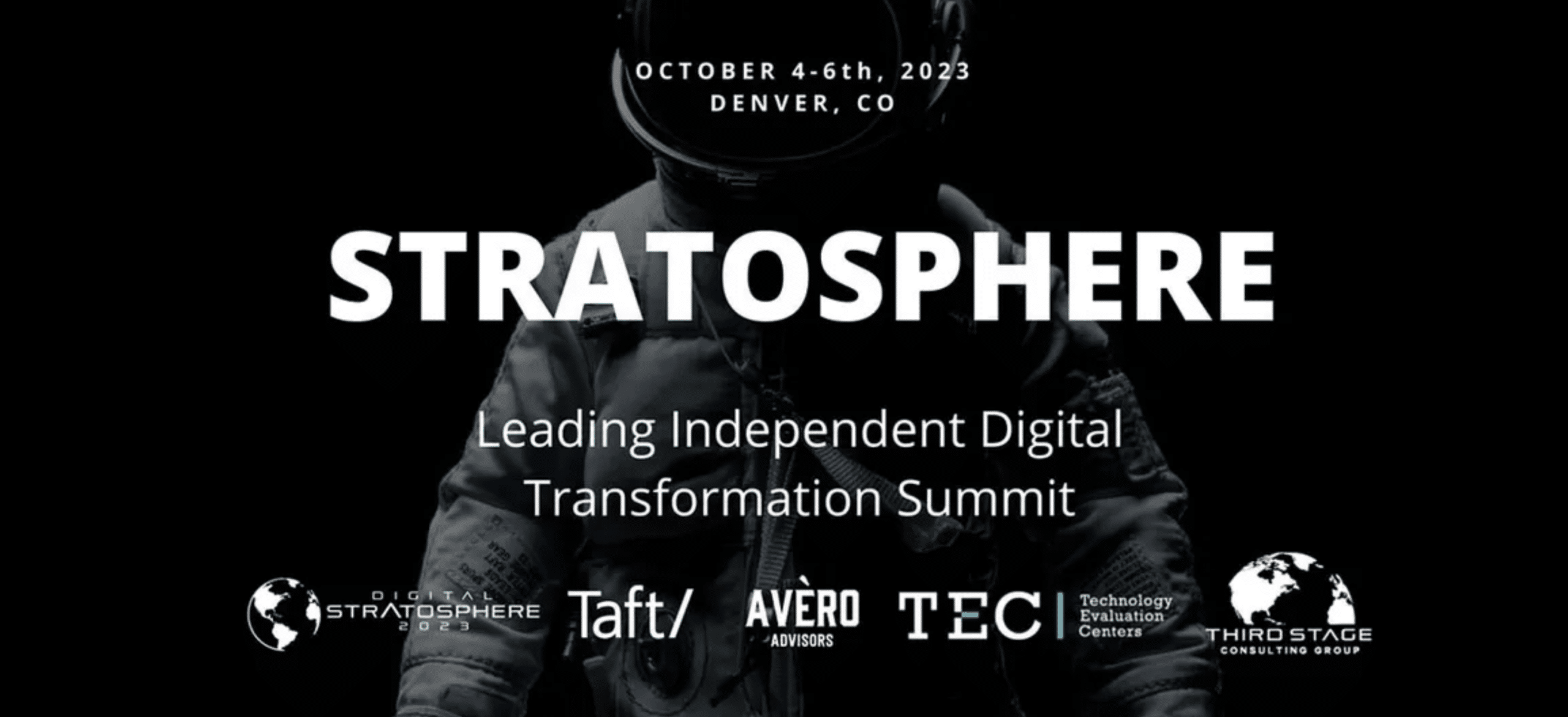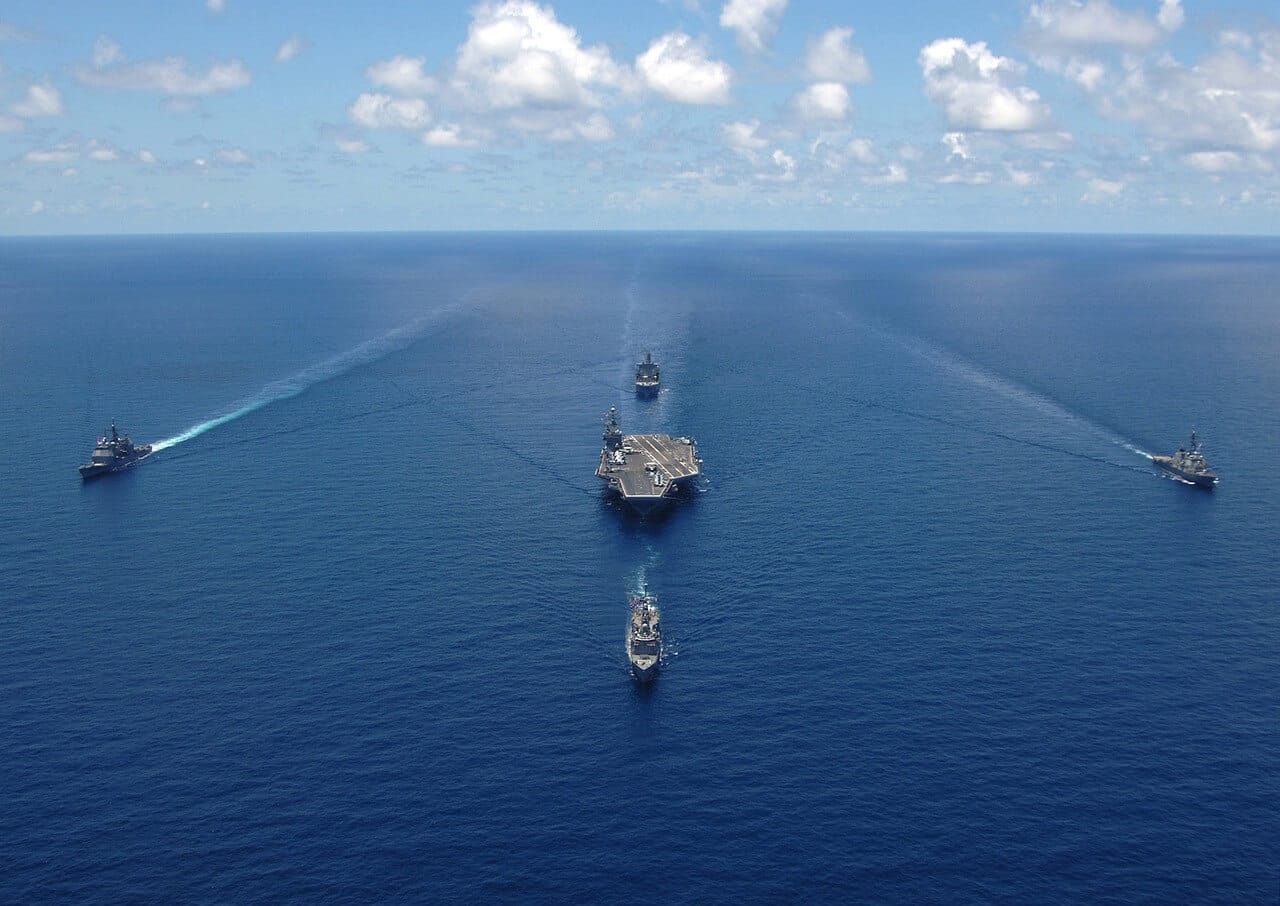

Sunday, October 16, 2022
- Labels: Case Studies , Project Failure , Project Success
Case Study 16: Nike’s 100 Million Dollar Supply Chain "Speed bump"

“This is what you get for 400 million, huh?”
Nike President and CEO Phil Knight famously raised the question in a conference call days before announcing the company would miss its third-quarter earnings by at least 28% due to a glitch in the new supply chain management software. The announcement would then send Nike’s stock down 19.8%. In addition, Dallas-based supply-chain vendor i2 Technologies, which Nike assigned blame, would suffer a 22.4% drop in stock price.
The relationship would ultimately cost Nike an estimated $100 million. Each company blamed the other for the failure, but the damage could have been dramatically reduced if realistic expectations had been set early on and a proper software implementation plan had been put in place. Most companies wouldn’t overcome such a disastrous supply chain glitch or “speed bump,” as Knight would call it, but Nike would recover due to its dominant position in the retail footwear and apparel market.
In 1999, two years before Knight’s famous outburst, Nike paid i2 $10 million to centralize its supply, demand, and collaboration planning system with a total estimated implementation cost of $40 million. Initially, i2 was the first phase of The Nike Supply Chain (NSC) project. The plan was to implement i2 to replace the existing system and introduce enterprise resource planning (ERP) software from SAP and customer relationship management (CRM) software from Siebel Systems.
The goal of the NSC project was to improve Nike’s existing 9-month product cycle and fractured supply chain. As the brand experienced rapid growth and market dominance in the 1990s, it accumulated 27 separate order management systems around the globe. Each is entirely different from the next and poorly linked to Nike’s headquarters in Beaverton, Oregon.
At the time, there wasn’t a model to follow at the scale Nike required. Competitors like Reebok struggled to find a functional supply chain solution specific to the retail footwear and apparel industry. In an effort to solidify its position as the leader in sportswear, Nike decided to move forward quickly with i2’s predictive demand application and its supply chain planner software.
"Once we got into this, we quickly realized that what we originally thought was going to be a two-to-three-year effort would be more like five to seven," - Roland Wolfram, Nike’s vice president of global operations and technology.
The NCS project would be a success, and Nike would eventually accomplish all its supply chain goals. However, the process took much longer than expected, cost the company an additional $100 million, and could have been avoided had the operators or both companies taken a different approach to implementation.
"I think it will, in the long run, be a competitive advantage." – Phil Knight
In the end, Knight was right, but there are many valuable lessons to learn from the Nike i2 failure.
If you want to make sure your business critical project is off to a great start instead of on its way on my list with project failures? Then a New Project Audit is what you are looking for. If you want to know where you are standing with that large, multi-year, strategic project? Or you think one of your key projects is in trouble? Then a Project Review is what you are looking for. If you just want to read more project failure case studies? Then have a look at the overview of all case studies I have written here .
So, before we get into the case study, let’s look at precisely what happened...
Timeline of Events
1996 - 1999
Nike experienced incredible growth during this period but was at a crossroads. Strategic endorsement deals and groundbreaking marketing campaigns gave the company a clear edge over Adidas and Reebok, its two most substantial competitors in the 80s and 90s. However, as Nike became a world-renowned athletics brand, its supply chain became more complex and challenging to manage.
Part of Nike’s strategy that separated itself from competitors was the centralized approach. Product design, factory contracting, and order fulfillment were coordinated from headquarters in Oregon. The process resulted in some of the most iconic designs and athlete partnerships in sports history. However, manufacturing was much more disoriented.
During the 1970s and 80s, Nike battled to develop and control the emerging Asian sneaker supply chain. Eventually, the brand won the market but struggled to expand because of the nine-month manufacturing cycle.
At the time, there wasn’t an established method to outsource manufacturing from Asia, making the ordering process disorganized and inefficient across the industry. In addition, Nike’s fractured order management system contained tens of millions of product numbers with different business rules and data formats. The brand needed a new way to measure consumer demand and manage purchasing orders, but the state of the legacy system would make implementing new software difficult.
At the beginning of 1999, Nike decided to implement the first stage of its NSC project with the existing system. i2 cost the company $10 million but estimated the entire project would cost upwards of $400 million. The project would be one of the most ambitious supply chain overhauls by a company of Nike’s size.
i2 Technologies is a Dallas, Texas-based software company specializing in designing solutions that simplify supply and demand chain management while maximizing efficiency and minimizing cost. Before the Nike relationship, i2 was an emerging player in logistics software with year-over-year growth. Involvement in the Nike project would position the company as the leading name in supply chain management software.
Nike’s vision for the i2 phase of NSC was “achieving greater flexibility in planning execution and delivery processes…looking for better forecasting and more profitable order fulfillment." When successfully implemented, the manufacturing cycle would be reduced from nine months the six. This would convert the supply chain to make-to-order rather than make-to-sell, an accomplishment not yet achieved in the footwear and apparel industry.
Predicting demand required inputting historical sales numbers into i2’s software. “Crystal balling” the market had substantial support at the time among SCM companies. While the belief that entering numbers into an algorithm and spitting out a magical prediction didn’t age well, the methodology required reliable, uniform data sets to function.
Nike decided to implement the “Big Bang” ERP approach when switching to i2 for the supply chain management. The method consists of going live where the business completely changes without phasing out the old system. Nike also opted for a single instance strategy for implementation. The CIO at the time, Gordon Steele, is quoted saying, “single instance is a decision, not a discussion.” Typically, global corporations choose a multi-instance ERP solution, using separate instances in various regions or for different product categories.
By June of 2000, various problems with the new system had already become apparent. According to documents filed by Nike and i2 shareholders in class-action suits, the system used different business rules and stored data in various formats, making integration difficult. In addition, the software needed customization beyond the 10-15% limit recommended by i2. Heavy customization slowed down the software. For example, entries were reportedly taking over a minute to be recorded. In addition, the SCM system frequently crashed as it struggled to handle Nike’s tens of millions of product numbers.
The issues persisted but were fixable. Unfortunately, the software was linked to core business processes, specifically factory orders, that sent a ripple effect that would result in over and under-purchasing critical products. The demand planner would also delete ordering data six to eight weeks after it was entered. As a result, planners couldn’t access purchasing orders that had been sent to factories.
Problems in the system caused far too many factory orders for the less popular shoes like the Air Garnett IIIs and not enough popular shoes like the Air Jordan to meet the market's demand. Foot Locker was forced to reduce prices for the Air Garnett to $90 instead of the projected retail price of $140 to move the product. Many shoes were also delivered late due to late production. As a result, Nike had to ship the shoes by plane at $4-$8 a pair compared to sending them across the Pacific by boat for $0.75.
November 2000
According to Nike, all the problems with i2’s supply chain management system were resolved by the fall. Once the issues were identified, Nike built manual workarounds. For example, programmers had to download data from i2’s demand predictor and reload it into the supply chain planner on a weekly basis. While the software glitches were fixed and orders weren’t being duplicated or disappearing, the damage was done. Sales for the following quarter were dramatically affected by the purchasing order errors resulting in a loss of over $100 million in sales.
Nike made the problem public on February 27, 2001. The company was forced to report quarterly earnings to stakeholders to avoid repercussions from the SEC. As a result, the stock price dove 20%, numerous class-action lawsuits were filed, and Phil Knight famously voiced his opinion on the implementation, "This is what you get for $400 million, huh?"
In the meeting, Nike told shareholders they expected profits from the quarter to decline from around $0.50 a share to about $0.35. In addition, the inventory problems would persist for the next six to nine months as the overproduced products were sold off.
As for the future of NSC, the company, including its CEO and President, expressed optimism. Knight said, "We believe that we have addressed the issues around this implementation and that over the long term, we will achieve significant financial and organizational benefit from our global supply-chain initiative."
A spokeswoman from Nike also assured stakeholders that the problems would be resolved; she said that they were working closely with i2 to solve the problems by creating “some technical and operational workarounds” and that the supply chain software was now stable.
While Nike was positive about the implementation process moving forward, they placed full blame on the SCM software and i2 Technologies.
Nike stopped using i2’s demand-planning software for short-and-medium range sneaker planning; however, it still used the application for short range and its emerging apparel business. By the Spring of 2001, Nike integrated i2 into its more extensive SAP ERP system, focusing more on orders and invoices rather than predictive modeling.
What Went Wrong?
While the failures damaged each company’s reputation in the IT industry, both companies would go on to recover from the poorly executed software implementation. Each side has assigned blame outward, but after reviewing all the events, it's safe to say each had a role in the breakdown of the supply chain management system.
Underestimating Complexity
Implementing software at this scale always has risks. Tom Harwick, Gigi Information Group’s research director for supply chain management, said, “Implementing a supply-chain management solution is like crossing a street, high risk if you don't look both ways, but if you do it right, low risk.”
One of Nike's most significant mistakes was underestimating the complexity of implementing software at such a large scale. According to Roland Wolfram, Nike’s operators had a false sense of security regarding the i2 installation because it was small compared to the larger NSC project. "This felt like something we could do a little easier since it wasn’t changing everything else [in the business]," he says. "But it turned out it was very complicated."
Part of the reason why the project was so complicated was because of Nike’s fractured legacy supply chain system and disoriented data sets. i2’s software wasn’t designed for the footwear and apparel industry, let alone Nike’s unique position in the market.
Data Quality
Execution by both parties was also to blame. i2 Technologies is on record recommending customization not to exceed 10-15%. Nike and i2 should have recognized early on that this range would be impossible to accommodate the existing SCM system.
Choosing a Big Bang implementation strategy didn’t make sense in this scenario. Nike’s legacy system data was too disorganized to be integrated into the i2 without making dramatic changes before a full-on launch.
Poor Communication
Communication between Nike and i2 from 1999 to the summer of 2000 was poor. i2 claimed not to be aware of problems until Knight issued blame publicly. Greg Brady, the President of i2 Technologies who was directly involved with the project, reacted to the finger-pointing by saying, "If our deployment was creating a business problem for them, why were we never informed?" Brady also claimed, "There is no way that software is responsible for Nike's earnings problem." i2 blamed Nike’s failure to follow the customization limitations, which was caused by the link to Nike’s bake-end.
Rush to Market
At the time, Nike was on the verge of solidifying its position as the leader in footwear and sports apparel for decades to come. Building a solid supply chain that could adapt to market trends and reduce the manufacturing cycle was the last step toward complete market dominance. In addition, the existing supply chain solutions built for the footwear and apparel industry weren’t ready to deploy on a large scale. This gave Nike the opportunity to develop its own SCM system putting the company years ahead of competitors. Implementing functional demand-planning software would be highly valuable for Nike and its retail clients.
i2 also was experiencing market pressure to deploy a major project. Had the implementation gone smoothly, i2 would have a massive competitive advantage. The desire to please Nike likely played a factor in i2’s missteps. Failing to provide clear expectations and communication throughout the process may not have happened with a less prominent client.
Failure to Train
After the problems became apparent in the summer of 2000, Nike had to hire consultants to create workarounds to make the SCM system operational. This clearly indicates that Nike’s internal team wasn’t trained adequately to handle the complexity of the new ERP software.
Nike’s CIO at the time reflected on the situation. "Could we have taken more time with the rollout?" he asked. "Probably. Could we have done a better job with software quality? Sure. Could the planners have been better prepared to use the system before it went live? You can never train enough."
How Nike Could Have Done Things Differently
While Nike and i2 attempted to implement software that had never been successfully deployed in the global footwear and apparel industry, many problems could have been avoided. We can learn from the mistakes and how Nike overcame their challenges with i2 to build a functioning ERP system.
Understanding and Managing Complexity
Nike’s failure to assess the complexity of the problem is at the root of the situation. Regardless if the i2 implementation was just the beginning of a larger project, it featured a significant transition from the legacy system. Nike’s leadership should have realized the scale of the project and the importance of starting NSC off on the right foot.
i2 also is to blame for not providing its client with realistic expectations. As a software vendor, i2 is responsible for providing its client with clear limitations and the potential risks of failing to deploy successfully.
See " Understanding and Managing Your Project’s Complexity " for more insights on this topic.
Collaborate with i2 Technologies
Both companies should have realized that Nike required more than 10-15% customization. Working together during the implementation process could have prevented the ordering issues that were the reason for the lost revenue.
Collaboration before deployment and at the early stages of implementation is critical when integrating a new system with fractured data. Nike and i2 should have coordinated throughout the process to ensure a smooth rollout; instead, both parties executed poor project management resulting in significant financial and reputational blows.
See " Solving Your Between Problems " for more insights on this topic.
Hire a 3rd Party Integration Company
Nike’s lack of understanding of the complexity of SCM implementation is difficult to understand. If i2 had been truthful in that they did not know about problems with their software, Nike could have made a coordinated decision not to involve the software company during the process.
Assuming that is the case, Nike should have hired a 3rd party to help with the integration process. Unfortunately, Nike’s internal team was not ready for the project. Outside integrators could have prevented the problems before the damage was done.
Not seeking outside help may be the most significant aspect of Nike’s failure to implement a new SCM system.
See " Be a Responsible Buyer of Technology " for more insights on this topic.
Deploy in Stages
A “Big Bang” implementation strategy was a massive mistake by Nike. While i2 should have made it clear this was not the logical path considering the capabilities of their software and Nike’s legacy system, this was Nike’s decision.
Ego, rush to market, or failure to understand the complexities of the project could all have been a factor in the decision. Lee Geishecker, a Gartner analyst, stated that Nike chose to go live a little over a year after starting the project, while projects of this scale should take two years before deployment. In addition, the system should be rolled out in stages, not all at once.
Brent Thrill, an analyst at Credit Suisse First Boston, is on record saying he would have kept the old system running for three years while testing i2’s software. In another analysis, Larry Lapide commented on the i2 project by saying, "Whenever you put software in, you don't go big bang, and you don't go into production right away. Usually, you get these bugs worked out . . . before it goes live across the whole business."
At the time, Nike’s planners weren’t prepared for the project. While we will never know what would have happened if the team had been adequately trained, proper preparation would have put Nike in a much better position to handle the glitches and required customizations.
See " User Enablement is Critical for Project Success " for more insights on this topic.
Practice Patience in Software Implementation
At the time, a software glitch causing a ripple effect that would impact the entire supply chain was a novel idea. Nike likely made their decisions to risk the “Big Bang” strategy, deploy in a year without phases and proper testing, and not seek outside help because they assumed the repercussions of a glitch wouldn’t be as catastrophic.
Impatience resulted in avoidable errors. A more conservative implementation strategy with adequate testing would have likely caught the mistakes.
See " Going Live Too Early Can Be Worse as Going Late " for more insights on this topic.
Closing Thoughts
One of the most incredible aspects of Nike’s implementation failure is how quickly the company bounced back. While Nike undoubtedly made numerous mistakes during the process, NSC was 80% operational in 2004.
Nike turned the project around by making adjustments and learning patience. Few companies can suffer a $100 million “speed bump” without filing bankruptcy, but Nike is in that position because of its resilience. The SAP installation wasn’t rushed and resumed many aspects of its original strategy. In addition, a training culture was established due to the i2 failures. Customer service representatives receive 140 to 180 hours of training from highly skilled “super users,” All employees are locked out of the system until they complete their required training courses.
Aside from the $100 million loss, the NSC project was successful. Lead times were reduced from nine months to six (the initial goal), and Nike’s factory inventory levels were reduced from a month to a week in some cases. Implementing a new SCM system also created an integration between departments, better visibility of customer orders, and increased gross margins.
While Nike could have executed far more efficiently, Phil Knight’s early assessment of the i2 failure turned out to be true. In the long run, the process gave Nike a competitive advantage and was instrumental in building an effective SCM system.
In a nutshell: A failure to demonstrate patience, seek outside help, and rush software implementation can have drastic consequences.
> Nike says i2 hurt its profits
> I2 Technologies, Inc.
> How Not to Spend $400 Million
> i2-Nike fallout a cautionary tale
> Nike rebounds: How Nike recovered from its supply chain disaster
> Scm and Erp Software Implementation at Nike – from Failure to Success
> I2 Says: "You Too, Nike"
The 2024 Top 10 ERP Systems Report
Our experts have highlighted ten vendors that can help your organization make data-driven decisions.
The 2024 ERP Report
Every year, Panorama analyzes industry trends to understand organizations’ selection and implementation practices when it comes to enterprise software.
ERP selection & implementation
Management consulting
Software Expert Witness
The 2024 Top Government ERP Systems Report
This independent report highlights the ERP vendors that Panorama has found to be highly functional for states, municipalities, nonprofits, and other public sector entities.
Reports & Whitepapers
Tools & Resources
Events, Webinars & Podcasts
ERP Consultations
Popular Blogs
Top 10 ERP Software
Our list of top 10 ERP software highlights the vendors our ERP experts have found to be innovative and strong in functionality. This is an overview of those ERP systems.
Blog Collection
Lessons Learned From the Nike Supply Chain Management (SCM) Failure
by Bill Baumann | Jan 27, 2022

A supply chain management system is supposed to help a company streamline and centrally manage its flow of goods and services. It isn’t supposed to result in excess inventory or lead to extensive order delays.
Yet, that’s exactly what happened when Nike implemented an SCM system back in 2001. Performed in partnership with i2 Technologies, the project started off promising but quickly veered off-track. As a result, the mega-brand’s supply chain malfunctioned at several critical junctures, leading to a significant dip in profits.
Today, we’re taking a closer look at the Nike SCM failure in this inventory management case study . We’ll share what happened, the lessons learned, and how you can avoid a similar fate in your own implementation.
Contemplating litigation?
We have multiple software expert witnesses available for provision of reports, depositions, and testimonies.
The Nike SCM Failure: What Happened?
At its core, SCM software is designed to help companies reduce their operating costs by enabling more accurate and timely forecasts. With the right platform, users can better anticipate their suppliers’ purchasing requirements, as well as upcoming customer orders.
Nike began installing the i2 SCM software in 2001. The goal was to automate certain parts of the supply chain for its footwear division, including inventory and order management.
When the system went live, however, it was unable to match Nike product inventories with customer demand. As a result, the company experienced both excesses and shortages — both of which cut into their bottom line.
In fact, Nike announced that as a result of its failed SCM project, it would be unable to meet its third-quarter projections.
According to one analyst, the financial implications were even greater. Specifically, the SCM breakdown with i2 was only one part of a larger technical failure that ultimately cost Nike $400 million over the course of the year.
The failure also caused i2 stock to drop 22% , and led to a public dispute between Nike and i2.
Let’s look at the phases leading up to this SCM failure and discuss how it could have been avoided.
4 Lessons Learned From The Nike SCM Failure
Are you planning an SCM implementation at your organization? When all the right steps are in place, these platforms have the potential to transform your supply chain operations for the better.
Yet, as evidenced by Nike, the wrong moves can have the opposite effect.
Here are a few key lessons learned:
1. Keep Industry Complexity in Mind
One challenge that Nike faced was an inventory that was both vast and varied.
This is the case with most retail establishments. Trying to organize everything into an SCM system is a complex and time-consuming endeavor. Not only are there different products, but there are also different color options and sizes to consider.
It’s important to make sure you have the time and resources in place to input all this data before going live. This includes allocating the right personnel to the effort.
In this case, Nike hired the i2 consulting team to oversee the transformation, but there were still insufficient protocols to protect against critical software issues.
Considering that this was meant to be a multi-year systems upgrade that would eventually lead to global deployment, project leaders should have built a project plan that accounted for industry-specific challenges.
2. Software Customizations Can Strain a Project
Many times, organizations will choose to customize some functions of their SCM, CRM, or ERP system . While these changes can help the software work for an organization’s unique needs, they can also heap additional cost and risk onto a project.
With the Nike project, representatives acknowledged that standard methodology wasn’t in place during the implementation. While the i2 software came equipped with an apparel industry template, Nike chose not to use it.
Instead, they pursued a custom approach and rushed the migration process, settling for data that insufficiently represented their company. This strained the software beyond its built-in capabilities and led to issues with data transfer.
3. Tests and Pilot Runs are Key
One of the most glaring issues with the Nike SCM implementation was that the system, which affected the brand’s global supply chain, wasn’t tested even once before it went live.
Testing is an essential stage in any enterprise software project. It gives the IT team a chance to identify and remediate any bugs or problems. This ensures fewer headaches when it’s finally time to go live.
At the same time, it’s equally important to conduct system pilot runs. This ensures the software, data, and processes all work together seamlessly.
Going live without adequate testing or conference room pilots not only leaves the system ripe for failure but can also decrease user morale. A platform that malfunctions does little to increase confidence in new workflows, which can lead to organizational change management challenges.
4. The Right Talent Makes a Difference
The people at the helm of an SCM project can greatly influence its success. Both Nike and i2 admitted shortcomings in this regard.
This was a major project that required top-tier talent. Both sides should have been equally invested in the outcome by building a strong project team.
Unfortunately, Nike’s IT staff was already stretched thin at the time of the implementation because employees were focusing on two other projects involving ERP and CRM software .
Optimize Your SCM Implementation
The challenges involved in the Nike SCM failure don’t have to deter you from pursuing a similar project at your own company. As long as the right plans are in place, SCM software or ERP implementation can help you improve the efficiency of your supply chain management processes.
Contact our enterprise software consultants below for a free consultation.
About the author

Bill Baumann

Posts You May Like:

How to Master the Organizational Change Process (According to OCM Experts)
From the time your company realizes that organizational change is necessary to the time you reach the one-year milestone of successfully sustained change, you need a project team that understands organizational change management (OCM) from beginning to end. Today,...

Change Management Considerations to Guide Your Digital Transformation
When you decide to implement new software systems and business processes, expertly guiding your team through these changes is crucial. The tools and methods involved in this effort are collectively known as organizational change management (OCM). Change management is...
Privacy Overview
Nike – ERP Implementation Saga
August 6, 2012
In June 2000, Nike’s new supply-and-demand software planning system implementation from i2 Technologies had hiccups and led to losses of $400 million. This case study highlights the failure and subsequent success of ERP implementation in Nike’s supply chain project.
Case Study – Table of Contents
- Introduction – Supply chain management problems at Nike
- Nike Background
- Nike’s Futures – An advance-order purchase system
- Nike’s supply chain project – from make-to-sell to make-to-order
- An ERP solution gone bad
- Playing the blame game. What went wrong?
- Nike’s business model and Inadequate Data problems
- The Turnaround
- Questions for discussion
- Bibliography
- Exhibit 1 – Nike Quick facts
- Exhibit 2 – Various ERP providers at Nike
- Exhibit 3 – How Successful ERP Selections Are Made
- Exhibit 4 – Lessons from Nike’s i2 disaster
- Exhibit 5 – Top Supply Chain Disasters
- Exhibit 6 – Symptoms of ERP implementation failures
- Exhibit 7 – i2 TradeMatrix Plan Solution
- Chart 1 – Nike – 10 year Financial History
1.Introduction – Supply chain management problems at Nike
In February 2001, Nike, the athletic shoe and clothing giant had warned that its third-quarter footwear sales were not up to the mark and as a result, its year-over-year sales for the third quarter would be flat. Nike’s stock price fell almost 20% the day this announcement came while i2’s stock plunged nearly 22 per cent. (Nike’s footwear division was powered by i2 Technologies.)
The problem – Nike’s new supply-and-demand software planning systems from i2 Technologies had hiccups in June 2000. The software incorrectly output orders for thousands more Air Garnett sneakers than the market had appetite for and called for thousands fewer Air Jordan’s than were needed. As a result, there were huge inventory problems and overdue deliveries.
Download case study PDF to read more…

Product details

Teaching and learning

- Artificial Intelligence
- Generative AI
- Business Operations
- Cloud Computing
- Data Center
- Data Management
- Emerging Technology
- Enterprise Applications
- IT Leadership
- Digital Transformation
- IT Strategy
- IT Management
- Diversity and Inclusion
- IT Operations
- Project Management
- Software Development
- Vendors and Providers
- Enterprise Buyer’s Guides
- United States
- Middle East
- España (Spain)
- Italia (Italy)
- Netherlands
- United Kingdom
- New Zealand
- Data Analytics & AI
- Newsletters
- Foundry Careers
- Terms of Service
- Privacy Policy
- Cookie Policy
- Copyright Notice
- Member Preferences
- About AdChoices
- Your California Privacy Rights
Our Network
- Computerworld
- Network World
Five Lessons Learned from Nike’s i2 Debacle
1 Be patient. Enterprise software implementations can’t be rushed and they take time to demonstrate benefits. Nike had the luxury?and good sense?to avoid being driven by hard external deadlines. This enabled it to learn from the mistakes it had made in its i2 project.
2 Define a business goal. Getting software up and running is not a goal; remaking the business is. Nike wanted to take three months out of its sneaker manufacturing cycle. The clarity of its business case sustained the project when things went south in 2000.
3 Reengineer processes. “Blank sheet” reengineering can lead to unrealistic business process designs that can’t be implemented through enterprise software. But deep discussions of how business is conducted can lead to something invaluable: a clear, performance-based goal for the project.
4 Just do it over. When poor integration, inadequate training, unstable software and spotty testing derailed Nike’s i2 project, Nike redoubled its efforts in those areas to avoid similar problems when it began rolling out its fully integrated enterprise software platform.
5 Keep your eye on the prize. Many companies today are trying to consolidate the separate versions of ERP they installed either to beat the Y2K deadline or to satisfy divisional managers. Nike held fast to a single-instance strategy. It added years to the project but will likely save the company money in the end.
Related content
Camunda simplifies process automation with new ai-powered natural language features, what’s holding ctos back, baldor’s first-ever cio sets the transformation agenda, italian cios at the crossroads of transformation and sustainability, from our editors straight to your inbox, show me more, what cios need to know about the newly proposed critical infrastructure cyber incident reporting rule.

IT staff shortages damage the bottom line: IDC report

Download our cloud cost management enterprise buyer’s guide

CIO Leadership Live Middle East with Ramadan Mohamad, Digital infrastructure specialist at Public Transport Corp.

CIO Leadership Live Middle East with Yahyah Pandor, Chief Information & Digital Officer, Fine Hygienic Holding


CIO Leadership Live NZ with Kirti Desai, GM Digital, Data & Technology, ProCare

Alteryx adds genAI to enable analytics creation via no-code platform

Sponsored Links
- Everybody's ready for AI except your data. Unlock the power of AI with Informatica

The Biggest ERP Failures of All Time
The enterprise technology landscape is riddled with ¬ERP failures from the last twenty years. Some are more extreme than others, but all have stories behind them. More importantly, they all contain important lessons that can help us in our digital transformations going forward.
Table of Contents
Overview of ERP failures
I used to dislike writing about ERP failures. My tendency is to write about case studies from current successful clients or focus on minor lessons learned. But it seems that my articles about failures generate much more interest than those relate to successful deployments.
It all started when a friend and colleague sent me a text suggesting that I write about the SAP failure at Lidl . I didn’t like the idea when I heard it, so ignored it for a few weeks. I figured I had better things to write about than a German retailer that didn’t manage its SAP implementation so well.
Then, one day I had writer’s block. I have religiously written at least one blog per week for the last 14 years, so it is quite unusual for me to be at a loss for words. With a looming deadline from our marketing team and nothing better to write about, I referred back to that text from my friend. To this day, my article about Lidl’s failure is by far the most read, shared, and liked blog that I have written.
The other problem with writing about failures is that there are so many to choose from. We have all heard about Hershey’s, Waste Management, and other high-profile failures, so just choosing one to write about can be difficult. Further complicating things is the fact that I have served as an ERP expert witness for some of the highest profile lawsuits in the industry, so I have court-mandated confidentiality orders that I need to abide by.
Ranking the biggest ERP failures
With so many to choose from, it was difficult to rank the biggest ERP failures of all time. By applying the following criteria, we were able to assemble a comprehensive list of the biggest to choose from:
- Overall price tag and magnitude of implementation time and cost overrun
- Severity of post-implementation disruption to the business operations
- The degree to which many of the failures could have been avoided
With these criteria in mind, we created a ranked list of the biggest disasters of all time. Some are clients that we served as either an expert witness and/or ERP project recovery consultant , while others are not clients of ours. In both cases, we do not reveal confidential information. Instead, we reveal only information made public by other media outlets, public court filings, or financial disclosures.
It should be noted that the criteria above tend to skew toward larger organizations. Many of us heard about Hershey’s when they couldn’t ship candy after their SAP failure, but many of us do not hear about the local, lesser known companies that didn’t experience failures of this magnitude. But even smaller organizations are not immune to the challenges outlined below.
Here are a few of the transformations featured in our top 10 ERP failures list, which you can view in its entirety by watching the video below:
Hershey’s SAP ERP failure
After Hershey’s suffered an SAP ERP failure , the company was incapable of processing $100 million worth of Kiss and Jolly Rancher orders, even though it had most of the inventory in stock.
Hershey’s made a textbook implementation mistake in relation to project timing. It first tried to squeeze a complex ERP implementation project into an unreasonably short timeline. Sacrificing due diligence for the sake of expediency is a sure-fire way to get into ERP implementation trouble.
Hershey’s made another critical scheduling mistake: it timed its cutover during its busy Halloween candy holiday season. It was unreasonable for Hershey’s to expect that it would be able to meet peak demand when its employees had not yet been fully trained on the new systems and workflows. Even in best-case ERP implementation scenarios, companies should still expect performance declines because of the steep learning curves.
Waste Management ERP failure
Waste Management spent approximately $100 million on its ERP failure . The project started in 2005 and SAP promised it would be done around 2007. SAP had promised Waste Management that they would have net annual benefits of $106 million to $220 million a year. With the plan not materializing as promised, Waste Management is stuck with trying to find a suitable ERP system for their business processes.
“From the beginning, SAP assured Waste Management that its software was an ‘out-of-the-box’ solution that would meet Waste Management’s needs without any customization or enhancements,” a public statement from the company reads. “Unfortunately, Waste Management ultimately learned that these representations were not true.”
Waste Management said product demonstrations by SAP prior to the deal employed “‘fake software environments, even though these demonstrations were represented to be the actual software.” The company ultimately settled out of court with SAP.
Nike’s ERP failure
In an attempt to upgrade its systems for the modern age, Nike spent roughly $400M in its ERP failure . The net impact on its operations were profound: it couldn’t properly forecast customer demand and get the right products to the right customers at the right time, which is a big problem for a large consumer products company like Nike.
Due to result of the improper handling of its ERP implementation, Nike lost sales of $100M dollars and saw an additional decrease of 20% of its share price. The company had to invest another 5 years and millions of dollars more to overcome the problem and to get the software working properly.
The rest of the biggest ERP failures of all time
These are just a few of the case studies featured in our top 10 list. These aren’t at the top of the list, and there is much more to be learned from the remainder of the list as well. You can also read more about some of these failures in past articles I have written, such as ones about the SAP failure at Haribo and the more recent ERP failure at Revlon .
You can learn about the rest of them by watching my YouTube video here . Those at the very top may surprise you – and chances are that you weren’t aware of many of them.
Lessons from the biggest ERP failures
The intent of this list is not to celebrate ERP failure. Instead, it is to understand and learn from those that have made some of the biggest mistakes ever seen in this industry. In some cases, ERP vendor hoaxes and other questionable economic biases were the culprits. In others, the client themselves were largely to blame. In many cases, it was a combination of both.
The biggest takeaway? Your ERP implementation is your transformation – not your vendor’s. Even if you are getting “Accentured” by your ERP systems integrator or being sold a bill of goods by your ERP vendor, it’s your job to fix it. Sticking your head in the sand – as many in this list clearly did – will only make matters worse.
Below is a free online ERP implementation risk assessment tool to determine your risks and to provide customized recommendations to mitigate those risks:
Please feel free to contact me to brainstorm ideas on how you might identify and mitigate the risks that pose challenges for you and your team. I am happy to be an informal sounding board as you continue on your digital transformation journey in 2020 and beyond!
Subscribe for updates
Stratosphere 2023.

Related Blog Posts

Predicting Digital Transformation Failure: 5 Telltale Signs

Who Is To Blame for Digital Transformation and ERP Implementation Failures?

Lessons from the US Navy SAP ERP Failure
Popular resources.

2023 Digital Transformation Report

Digital Transformations in Emerging Markets: 4 Considerations for Success

Change Management: The Secret Sauce to ERP and HCM Success

eBook: 20 Lessons from 1,000+ ERP Implementations

ERP Due Diligence Private Equity Investors Playbook
Additional blog categories.
- Artificial Intelligence
- Business Intelligence
- Business Process
- Business Transformation
- Cloud ERP Implementations
- cloud solutions
- Coronavirus and Digital Transformation
- CRM Implementations
- Cyber Security
- Data Management
- Digital Strategy
- Digital Stratosphere
- Digital transformation
- digital transformation case studies
- Digital Transformation News
- Emerging Technology
- enterprise architecture
- ERP architecture
- ERP Consulting
- ERP Expert Witness
- ERP Failures
- ERP Implementation Budget
- ERP Implementations
- ERP project
- ERP software selection
- ERP Systems Integrators
- ERP Thought Leadership
- Executive Leadership in Digital Transformation
- Future State
- Global ERP Implementations
- HCM Implementations
- Independent ERP
- Independent ERP Consultants
- Internet of Things
- legacy systems
- Manufacturing ERP Systems
- Mergers and Acquisitions
- Microsoft D365
- Microsoft D365 Consultants
- Microsoft Dynamics 365 Implementations
- Microsoft Sure Step
- NetSuite Implementations
- Oracle Cloud ERP Implementations
- Oracle ERP Cloud Expert Witness
- Oracle ERP Cloud Failures
- Organizational Change Management
- Project Management
- Quality Assurance
- SAP Activate
- SAP Expert Witness
- SAP failures
- SAP S/4HANA Implementations
- SAP S/4HANA vs. Oracle vs. Microsoft Dynamics 365
- SAP vs Oracle vs Microsoft Dynamics
- SAP vs. Oracle
- Small Business ERP Implementations
- Small Business ERP Systems
- Software Selection
- Software Testing
- Software Vendors
- SuccessFactors Implementations
- Supply Chain Management
- System Architecture
- Systems Integrators
- Tech Trends
- Technology Consultant
- Top ERP software
- Uncategorized
- Warehouse Management Systems
- Workday Implementations
International Office Locations
Third stage consulting.

Microsoft Dynamics Partners providing comparisons and opinions for the Dynamics ERP software selection process.

3 Biggest Failure Cases of ERP Implementation and How You Can Avoid the Same Mistakes
View our free webinars Sign up for WebSan University
Take our FREE ERP Assessment
ERP implementation is a quite an expensive and difficult process not only for small companies but for some multinational giants as well. However, with full preparation and thorough research to manage expectations, a successful ERP implementation can be achieved. Below, we outline the 3 biggest failure cases of ERP implementation and offer tips on what you can do to avoid the same mistakes.
Nike and a $400 Million “Glitch”
In 2000, Nike decided to upgrade their ERP system and invested $400 million dollars into the software called i2, where their initial goal was to manage supply chain and forecast the demand for products. This decision became a disaster for shoe giant with $100 million in sales loss and 20% stock price decrease because of a software glitch, which in turn, made stores unable to fill orders for the Air Jordans.
To avoid the same mistake, be sure to set realistic goals for your ERP implementation process early on and ensure that you take enough time to test the system for any kinks that need to be ironed out before moving forward with implementation.
Hershey and a Halloween Disaster
July of 1999 is a month which everybody in Hershey would rather want to forget because of the new ERP system launch that proved to be unsuccessful. A total of $112 million in investments were supposed to create an integrated ERP environment. However, this decision led to delivery problems of $100 million worth candies for Halloween 1999.
To make sure that your ERP implementation will go smoothly, set enough time to train the employees on a new software and don’t skip any steps in the testing process recommended by your ERP system provider.
Hewlett Packard and Lost Orders
In 2004, ERP implementation in HP was supposed to result in saved costs, shorter delivery time and development of a world-wide distribution network but brought $160 million of losses instead. A failure in migration resulted in 20% of orders to be trapped in the old ERP system
If you don’t want to be in HP’s shoes, plan the internal implementation process very carefully, otherwise it may lead to a lot of small mistakes and ultimately, a big failure in the end.
For more tips and techniques on how to save your company from an ERP implementation disaster, download our free ERP whitepaper.
Alina Hura , Digital Content Creator , WebSan Solutions Inc., a 2014 Ontario Business Achievement Award Winner for Service Excellence
- Myth Busters! Debunking Popular Myths About ERP Selection and Implementation
- Avoiding ERP Implementation Failure: The How, Who, What, When and Why
- What Top Management Needs to Know about ERP
- Post Implementation Optimization
- L’importance de la phase d’analyse durant l’implantation de votre ERP Microsoft Dynamics
Leave a Comment Cancel Reply
Your email address will not be published. Required fields are marked *
This site uses Akismet to reduce spam. Learn how your comment data is processed .
Privacy Overview
Necessary cookies are absolutely essential for the website to function properly. This category only includes cookies that ensures basic functionalities and security features of the website. These cookies do not store any personal information.
Any cookies that may not be particularly necessary for the website to function and is used specifically to collect user personal data via analytics, ads, other embedded contents are termed as non-necessary cookies. It is mandatory to procure user consent prior to running these cookies on your website.
ERP Implementation Failure Case Study Examples Report
ERP implementation failure is rare but can be catastrophic for organizations. In this report, ERP Research has documented examples of some of the most documented ERP failures in history.
We investigate and provide our learnings from failed ERP projects from unsuccessful implementations including:
- Miller Coors
We have explored each failed ERP implementation story and analysed why and how things went wrong and how you should learn from them to ensure a successful ERP project.
Learn what causes ERP projects to fail, whether you're planning to implement SAP, Oracle, Microsoft or other ERP vendor solutions. By learning the top reasons for failed ERP projects, you can ensure a successful ERP implementation in 2021.
This is a free ERP implementation failure case study report from ERP Research.
Download ERP Implementation Case Study Failure Report:
Enter correct contact details as it will be sent to your inbox.
Why does ERP implementation fail?
We explore why ERP projects can go wrong and fail in our report, which includes real life examples from Nike, Leaseplan, Lidl, Miller Coors and Hersheys. But ERP implementations can go wrong and lead to failure due to several reasons, including poor change management, selection of the wrong ERP solution and vendor, greedy systems integrators, poor project team alignment. Our ERP implementation case study examples will show you how making the wrong decisions during your project preparation phase can lead to bad outcomes.
Download the ERP implementation failure case study examples below.
» Operations Case Studies » Case Studies Collection » ICMR HOME » Operations Short Case Studies » View Detailed Pricing Info » How To Order This Case » Business Case Studies » Case Studies by Area » Case Studies by Industry » Case Studies by Company
» Study and analyze the problems faced in supply chain management (SCM) and ERP software implementation » Examine the reasons for SCM software implementation failures » Analyze the suitability and implications of 'Single Instance Strategy' of Nike for global ERP projects » Understand how companies can learn from their mistakes in SCM and ERP software implementation
SCM and ERP Software Implementation at Nike: From Failure to Success - Next Page>>
Case Studies Links:- Case Studies , Short Case Studies , Simplified Case Studies . Other Case Studies:- Multimedia Case Studies , Cases in Other Languages . Business Reports Link:- Business Reports . Books:- Text Books , Work Books , Case Study Volumes .
MBA Knowledge Base
Business • Management • Technology
Home » Management Case Studies » Case Study of Nike: The Cost of a Failed ERP Implementation
Case Study of Nike: The Cost of a Failed ERP Implementation
Nike, was founded in the year 1957 by Knight and the company since the very beginning manufacturing higher quality sports shoes for several sports inclusive of athletics, football, volleyball etc. Additionally, the company also has been involved in manufacturing equipment’s for fitness and related sports apparels such as caps. The organization since its development has always been involved in making higher commitments to innovative products. In the fiscal year of 2012, 24.1 billion dollars was generated by Nike with an increase by 16 percent since the last year. The organization further made announcements of increasing this total revenue generated in the 2015 fiscal year to reach 30 billion. More than 50000 employees across the globe are employed by Nike and there are several contracts wherein the company employs more than 80000 individuals. The mission statement of Nike is to develop inspiration and to consistently innovate for each sports person across the globe.

In the year 2000, however Nike took the decision of implementing a unique management of supply chain with the ability to forecast demand in the market so that the company can quickly meet with these requirements. This was also the time when the organization also was in the SAP ERP system implementation process but the company found that the forecasted demand was not adequate to the requirements at that particular situation. This made the company to adopt and choose the software named as I2 in order to enable the organization to quickly respond to the changes in the market of shoes, scheduled of planned productions with newer requirements and start to produce new products within a week instead of waiting for a whole month as the company did before. However, if successful then this strategy could have been a very fruitful one for Nike and the company would have been easily able to decrease the unwanted products from being produced, decreased inventory system and increase the shoe styles production rising the required demand. It was also known to Nike that implementing ERP systems can be very threatening and so the company was very patient when implementing these systems but as the system of I2 was very small, various precautions required to be taken by Nike were not taken.
ERP implementation at Nike
The particular demand planning software instance is known as the software of I2 which was the main factor that led towards major problems in the company. The company of Nike failed in properly evaluating the way in which this new software of planning demand will be integrated within the system legacy. The company rushed in implementing the software prior to their main package of SAP which was not ready to be deployed causing the system failure of I2 within the supply chain of Nike. There is no doubt that the company had a unique process of supply chain which needed the stores to make merchandizing pre-orders that is in advance for 6 months. The issue in this was the fact that the company did not every know whether the ordered sneakers in Nike’s store will be fashionable in the next 9 months when the same will be delivered to the stores. The company’s fashion designers and the planners of demand did not acutely interpret the way in which order with such a high leading time should be placed and the company totally depended on the brand name of Nike for selling its new products. In the shoe market a short order shipment of products is always demanded from the stores and this forced Nike to be under competitive pressure for getting their system of supply to perform in the next 6 months. The challenge of not being able to get the SCM in position led towards opening the company to lose out on the share in the market especially because of the fierce market competency. Therefore, when I2 system was implemented at Nike and the system lost the capability of holding up urgent and vigorous requirements of the9 month cycle planning, the company began to lose out and the forecasted information also completely was thrown off resulting in making the supply chain to cost the company 100 million dollars from damages directly. The company also had to face brand image problems, law suites being filed on its name and other speculative investigations further lowering the reputation of the company.
The software of I2 was actually made to help Nike in matching the demand and supply by mapping the specific products to be manufactured. The software needed to be linked with several ERP systems and back end processes. This project also was a replacement from the previous Manugistics implementation. The responsibility of the new project was to reduce the rubber needed, canvas needed and other sports requirements to be fulfilled by Nike but it failed.
- The new system of I2 needed customization to this legacy applicable at that speculative period. In addition, the big bang approach tried by Nike to implement the new system of managing the supply chain resulting in deteriorating the status of the company.
- The engine of demand-planning in the year 2000, named as I2, of the company, Nike, established order for several Air Garnetts rather than the demand of the market and for several popular products.
- There is no doubt that the company had a unique process of supply chain which needed the stores to make merchandizing pre-orders that is in advance for 6 months.
- The issue in this was the fact that the company did not every know whether the ordered sneakers in Nike’s store will be fashionable in the next 9 months when the same will be delivered to the stores.
- The company’s fashion designers and the planners of demand did not acutely interpret the way in which order with such a high leading time should be placed and the company totally depended on the brand name of Nike for selling its new products.
- In the shoe market a short order shipment of products is always demanded from the stores and this forced Nike to be under competitive pressure for getting their system of supply to perform in the next 6 months.
- The challenge of not being able to get the SCM in position led towards opening the company to lose out on the share in the market especially because of the fierce market competency.
- This resulting in causing a loss of 100 million dollars sales and this depressed the price of stock by 20 percent. In turn this resulted in various lawsuits of class-action nature after which Nike stated that this new system will gave the responsibility to manufacture the sport shoes of wrong kind. Nike however failed in properly training the employees in understanding the function of the new system leading towards excessive creation of products which were wrong. This was a main destruction faced by the company especially when the company had already invested more than 400 dollars (millions) over the process of implementing this software.
- This was the main blow to the company especially when the system implied that it has gone slow, there is no integration and there are various bugs in the system.
- Massive losses were faced by Nike and issues of large technical nature were faced by the company and all were related to the fact that the software failed to properly function.
- Consultants were brought in for building database and for bypassing the I2 application portions.
- The company further built bridges inside the software for enabling information sharing. This caused Nike to switch ranges of short and medium planning of sneakers to the system of SAP ERP which was using more estimated demand predictive algorithms.
- This also made the company to find a new foundation for the system of SCM and the company started to focus on training its employees for approximately 140 to 180 hours in order to make them perfectly understand the working of the system.
- Furthermore, a phased geographical process was implemented when the new SCM implementation and CRM along with ERP system implementation failed. This program was envisioned as an implementation of 2 to 3 years but the company took almost 6 years investing further more than 500 million dollars for properly implementing the system of supply chain to be managed.
The implementation of ERP, CRM and SCM systems at the same time and all together made Nike to experience benefits in multitude. These advantages were linked with the system of I2 management resulting in a better collaborative aspect with the factories of Nike in the far eastern area. This in turn resulted in reducing the pre building time amount needed for every shoe to be manufactured. The reduction was by 40 percent to approximately 4 percent. This time amount from the start and till the completion of the shoe was lowered by 6 to 9 months which led towards faster cycle time of product to market. The levels of Inventory were decreased from cutting the time of interval from a month to a week. This system helped in better demanding forecast and demanding visible aspects. A reduction in the experience risk led towards the effect of bull whip . In the end, the main reduction of cost took place by reducing the inventory process, costs of process and costs of product to increase the marginal gross value. Even though the experience of Nike was highly problematic in nature, the SCM implementation system still advantaged the company and offered it various benefits in the new system leading towards offering the company to enhance its revenue projections, the rate of productivity and also the sales of the company. The problems by Nike were solved by switching the vendor software’s. Currently Nike is making use of LLamasoft from the requirements of their ERP. There was clearly no breakage in the implementation of I2 technologies at Nike. The requirements, obviously from the side of the client were not satisfactory and this resulted in the requirement of line of communication to be even more previse and highly frequent in nature. Nike’s ERP system implementation of I2 technologies therefore was not a failure but it was just an experiment which the company took in its hands in order to understand the other ways by which the company will succeed in long term.
The I2 Software – Main Cause of Failure
Therefore the management at Nike was not a failure but a journey from failing to succeeding even though it makes the company lose out on time or capital. The recommendation offered will be on the important factors of success being managed which are inclusive of startup of project, committing management, scope of the project being outlined, team of project is established, managing change, communicating the change, training employees , customizing and modifying, budgeting and closure of the project. In the initial stage that is at the startup of the project, it is recommended that the company should develop a strategy for business , reviewing the strategy of IT, strategy of ERP, scope of the project, preparing the company to change process and application of the new system in accordance to the strategies of change management . At the second stage, commitment to management, the implementation recommended will be inclusive of involving all the stakeholders in the sponsorship of the project which are also consisted of committee of steering, escalation of issue and resolution of issue. This will further help in maintaining the support of management keeping them informed over the project. The third stage is the scope of the project where it would be recommended that the company first understands the requirements of the business and then plan the way in which the requirements can be satisfied rather than simply moving towards implementation. The project team on the other hand should apply proven methodologies of implementation and project tools that can empower the decisions made by the team in the implementation process.
From the perspective of analyzing the case of Nike, it was evident that the exploration of implementing ERP done by organizations needs to consider the important factors of success and then recommendation should be provided to maintain success with the implementation of ERP. These key success drivers are general regions which most of the projects of implementation based on ERP need to accomplish. As an important component of the project, SAP ERP, the company of Nike decided that it should implement the solution of SAP AFS as a variant of software named as SAP R/3 particularly for the industry of apparel and footwear. With the strategy of single instance within the conformity, the SAP AFS application was used by Nike throughout geographic locations and also made choices of implementing various applications of SAP inclusive of management of the supply chain along with warehouse of data in business . It was realized by Nike, after the debacle that the supply chain management implementation using the ERP system software cannot and should not be lightly considered. The organization was able to feel this from the perspective of a third party taking over the point of view of the integrator that helped the company also in understanding the implementation flaws to which the company was exposed. Therefore, the lessons learnt from this perspective are many but the main focus of the lesson is on considering the important factors of success and management of change when implementing a complicated system of ERP. The Nike case study clearly illustrates the success story of the company after it failed but not all organizations can result in a positive consequence.
Related posts:
- Case Study: Cisco Systems Inc.’s ERP Implementation
- Case Study of China Telecom: ERP Implementation
- Case Study: Why Walmart Failed in Germany?
- Case Study: Why Woolworths Failed as a Business?
- Case Study: Euro Disney Failure – Failed Americanism?
- Case Study: How Walmart Enhances Supply Chain Management with ERP Initiatives?
- Case Study of Nike: Building a Global Brand Image
- Case Study on Business Systems Planning And Implementation : McDonald’s Corporation
- Case Study of Air Asia: Information Technology Implementation for Business Success
- Case Study of General Electric: Six Sigma Implementation
Leave a Reply Cancel reply
Your email address will not be published. Required fields are marked *

COMMENTS
ERP software, specifically SAP's R/3 software, would be the bedrock of Nike's strategy, with i2 supply, demand and collaboration planner software applications and Siebel's CRM software also ...
Approximate, during the third and fourth quarters of 1999, Hershey lost about 0.5% market share. The Hershey's failure to implement the ERP software on time led to the loss of $150 million in ...
Then have a look at the overview of all case studies I have written here. Sources > Nike says i2 hurt its profits > I2 Technologies, Inc. > How Not to Spend $400 Million > i2-Nike fallout a cautionary tale > Nike rebounds: How Nike recovered from its supply chain disaster > Scm and Erp Software Implementation at Nike - from Failure to Success
As a result, the mega-brand's supply chain malfunctioned at several critical junctures, leading to a significant dip in profits. Today, we're taking a closer look at the Nike SCM failure in this inventory management case study. We'll share what happened, the lessons learned, and how you can avoid a similar fate in your own implementation.
The case gives a detailed account of the failure of Supply and Demand Planning software implementation at Nike, a leading Footwear and Apparel company. The case traces the history of supply chain and ERP software implementation at Nike and presents the rationale behind their implementation. It details the circumstances that led to the SCM software implementation failure and also examines the ...
ERP Case Study - Nike [FAILURE].pdf - Free download as PDF File (.pdf), Text File (.txt) or read online for free. Nike implemented an ERP system from i2 Technologies in 2000 to improve demand forecasting and quickly adapt to market changes. However, the integration with Nike's existing systems failed which led to inaccurate factory orders. As a result, Nike flooded the market with some shoes ...
Nike - ERP Implementation Saga. August 6, 2012. In June 2000, Nike's new supply-and-demand software planning system implementation from i2 Technologies had hiccups and led to losses of $400 million. This case study highlights the failure and subsequent success of ERP implementation in Nike's supply chain project.
The case traces the history of supply chain and enterprise resource planning (ERP) software implementation at Nike and presents the rationale behind their implementation. It details the circumstances that led to the supply chain management (SCM) software implementation failure and also examines the steps taken by Nike to fix the problem.
Supply Chain Management Software. 1 Be patient. Enterprise software implementations can't be rushed and they take time to demonstrate benefits. Nike had the luxury?and good sense?to avoid being ...
In July, Nike announced that it would be launching an enterprise resource planning (ERP) system across its global network. The system, which represents the company's largest investment in digital transformation yet, is now live in Greater China, with plans in place for a North American launch in 2024.. This investment comes as Nike looks to better serve its online customers, accelerate its ...
3. National Grid's lack of disaster testing. National Grid's ERP implementation was essentially blown away by Hurricane Sandy when the utility attempted to consolidate all of its U.S. operations on a common SAP system in 2012. Ultimately, the project took two years to clean up, at a cost of $585 million.
My tendency is to write about case studies from current successful clients or focus on minor lessons learned. But it seems that my articles about failures generate much more interest than those relate to successful deployments. ... Nike's ERP failure. In an attempt to upgrade its systems for the modern age, Nike spent roughly $400M in its ERP ...
Below, we outline the 3 biggest failure cases of ERP implementation and offer tips on what you can do to avoid the same mistakes. Nike and a $400 Million "Glitch" In 2000, Nike decided to upgrade their ERP system and invested $400 million dollars into the software called i2, where their initial goal was to manage supply chain and forecast ...
Nike spent $400M to upgrade its ERP system that ended up with a loss of approximately $100M and a 20% drop in stock prices. They had to invest another 5 year...
In this report, ERP Research has documented examples of some of the most documented ERP failures in history. We investigate and provide our learnings from failed ERP projects from unsuccessful implementations including: Lidl. Hersheys. Nike. Leaseplan. Miller Coors. We have explored each failed ERP implementation story and analysed why and how ...
A focus on agile ERP systems will play a critical role in the projected expansion of Nike's consumer-direct approach. "Technology can be an accelerator" in the company's strategy, Kissler said. Where businesses seek agility, acquisitions — in addition to in-house projects — can quickly help augment an enterprise's tech stack.
The case gives a detailed account of the failure of Supply and Demand Planning software implementation at Nike, a leading Footwear and Apparel company. The case traces the history of supply chain and ERP software implementation at Nike and presents the rationale behind their implementation. It details the circumstances that led to the SCM software implementation failure and also examines the ...
Case Study of Nike: The Cost of a Failed ERP Implementation. Nike, was founded in the year 1957 by Knight and the company since the very beginning manufacturing higher quality sports shoes for several sports inclusive of athletics, football, volleyball etc. Additionally, the company also has been involved in manufacturing equipment's for ...
Now, to control its 9-month manufacturing cycle, Nike also needs a centralized system like the planning process. For this reason, ERP software - in this case SAP R/3 - is the backbone, equipped with supply and demand forecasting applications (commonly called SCM) from i2, and CRM applications from Siebel, using middleware from STC (now SeeBeyond).
Dive Brief: Nike will launch its new ERP system across its global network this year in a bid to increase inventory visibility and productivity, CFO Matthew Friend said during a June earnings call.; The system, which Friend described as the company's "biggest investment in its digital transformation," is set to go live in Greater China this month, while Nike prepares to deploy it in North ...
Nike ERP case study: Failure implementation | PDF | Enterprise Resource Planning | Business. ERP Case Study - Nike [FAILURE] (1) - Free download as PDF File (.pdf), Text File (.txt) or read online for free.
found that ERP systems implementation works fail at a percentage of 60 - 70%. (Kallivokas and Voz ik is, 2009). Almost 41% of companies are unable to use more. than 50% of the benefits that accrue ...
NIKE ERP FAILURE CASE STUDY. Nike's 2000 ERP implementation led to $100 million in lost sales and a decrease in its stock price by 20%. In an attempt to upgrade its systems for the modern age, Nike spent roughly $400M in its ERP failure. The issue with the system was that its demand planning module overpredicted the amount of Air Garnett ...